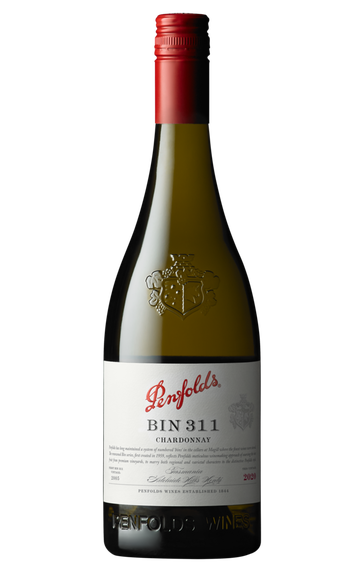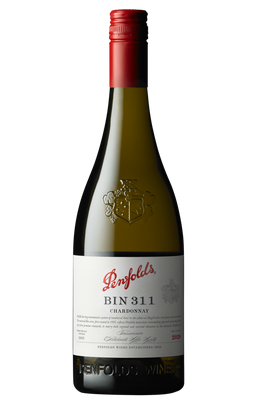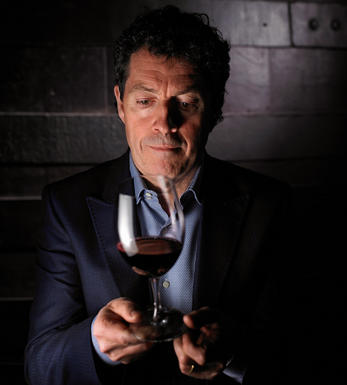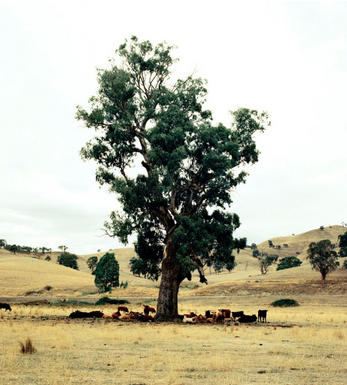
2020 Penfolds, Bin 311, Chardonnay, Australia

Critics reviews
Limpid yellow. Pungent lemon curd, dried pear and nectarine aromas are complemented by smoky mineral, fennel and vanilla nuances. Chewy and sharply focused on the palate, offering concentrated citrus and orchard fruit flavors that show firm tension and a floral nuance that builds with air. A hint of marzipan lingers as mineral and floral notes carry through the firm finish.
Drink 2024 - 2030
Josh Raynolds, Vinous.com (July 2021)
Quite smoky and toasty, but also richly fruited and citrusy, the 2020 Bin 311 Chardonnay is a lovely example of Australian Chardonnay. Aged eight months in 41% new French oak, this blend from Tasmania (68%), Piccadilly (25%) and Henty (7%) is bold and flavorful, medium-bodied, with a ripe, custardy feel and lingering, citrusy-crisp finish. It's the best value of these three Penfolds Chardonnays, loaded with pineapple and citrus notes and bursting with flavor for a price that's competitive with comparable wines out of California.
Drink 2021 - 2030
Joe Czerwinski, Wine Advocate (July 2021)
Smells really quite leesy. Very pale. This from the vintage with the fires in Adelaide Hills but there is not a smidgeon of smoke taint in this crystalline wine that's so pure and lean it almost smells like a Riesling! Once you get past the lees… Light and fresh and very much in the current idiom of crisper Australian Chardonnays. Tight and contained with a hint of lime. I'd be inclined to wait until next year before enjoying this.
Drink 2022 - 2026
Jancis Robinson MW, JancisRobinson.com (July 2021)
About this WINE

Penfolds
Penfolds enjoys an iconic status that few New World producers have achieved. Established in 1844 at the Magill Estate near Adelaide, it laid the foundation for fine wine production in Australia.
The winemaking team is led by the masterful Peter Gago; it has the herculean task of blending the best wines from a multitude of different plots, vineyards and regions to create a consistent and outstanding range of wines. Its flagship wine, Grange, is firmly established as one of the finest red wines in the world.
Under Gago’s stewardship, the Penfolds range has evolved over time. Winemaking has moved away from New World heat and the sort of larger-than-life style that can mask individuality; the contemporary wines instead favour fine balance and typicity for the region or grape.

South Australia
At 72,000 hectares, South Australia is the engine room of the country's wine industry, responsible for 43 percent of its vineyards and encompassing some of Australia’s most famous fine wine regions.
One of the most important areas in qualitative terms is the Barossa Valley, beginning 50km north-east of Adelaide, and famous for its full-bodied Shiraz, as well as for its Grenache and Mourvèdre. To the east, the cool Eden Valley is home to some really fine Riesling and top-class Shiraz, such as that made by Henschke. To the north of Barossa is the Clare Valley, also a source of good Riesling but home to well-structured reds as well.
South-east of Adelaide lies the delightful vineyard area of the Adelaide Hills, where fine Sauvignon, Chardonnay, Riesling and Pinot Noir are produced by wineries such as Petaluma and Llangibby Estate. Langhorne Creek to the east of Adelaide has earned a reputation for its Cabernet Sauvignon, Verdelho and Shiraz while, between Adelaide and the sea, McLaren Vale is a noted area for red wines.
The unique vineyard region of Coonawarra lies 400km south-east in an area of pure limestone topped by a loose, red topsoil. Cool enough to resemble Bordeaux, this area produces great Cabernets and Merlots and is much in demand. Slightly to the north and to the west lie the regions of Padthaway and Mount Benson respectively, which enjoy similar success as sources of great white wines, especially Chardonnay. Wrattonbully however is known for its fresh, varietally-pure Cabernet Sauvignon and Merlot.
However it’s the less-distinguished Riverland region that accounts for 50 percent of the state’s wine production.

Chardonnay
Chardonnay is often seen as the king of white wine grapes and one of the most widely planted in the world It is suited to a wide variety of soils, though it excels in soils with a high limestone content as found in Champagne, Chablis, and the Côte D`Or.
Burgundy is Chardonnay's spiritual home and the best White Burgundies are dry, rich, honeyed wines with marvellous poise, elegance and balance. They are unquestionably the finest dry white wines in the world. Chardonnay plays a crucial role in the Champagne blend, providing structure and finesse, and is the sole grape in Blanc de Blancs.
It is quantitatively important in California and Australia, is widely planted in Chile and South Africa, and is the second most widely planted grape in New Zealand. In warm climates Chardonnay has a tendency to develop very high sugar levels during the final stages of ripening and this can occur at the expense of acidity. Late picking is a common problem and can result in blowsy and flabby wines that lack structure and definition.
Recently in the New World, we have seen a move towards more elegant, better- balanced and less oak-driven Chardonnays, and this is to be welcomed.


Buying options
Add to wishlist
Description
This is a delicious multiregional blend of grapes from Tasmania, Adelaide Hills and Henty, with great minerality coming to the fore on the nose. There is a tropical fruit profile of pineapples, white stone-fruit, lemon zest, and a touch of fennel and jasmine-like floral notes, all very pure and focused.
The palate perfectly reflects the nose, with vibrant stone, tropical fruits and mouth-watering acidity, with a gentle creaminess adding weight and balance. This is a great modern Australian Chardonnay, true to the classic Penfolds’ style. It will age beautifully in the cellar.
Drink 2023 - 2032
Javier Perurena, Private Account Manager, Berry Bros. & Rudd (July 2021)
wine at a glance
Delivery and quality guarantee